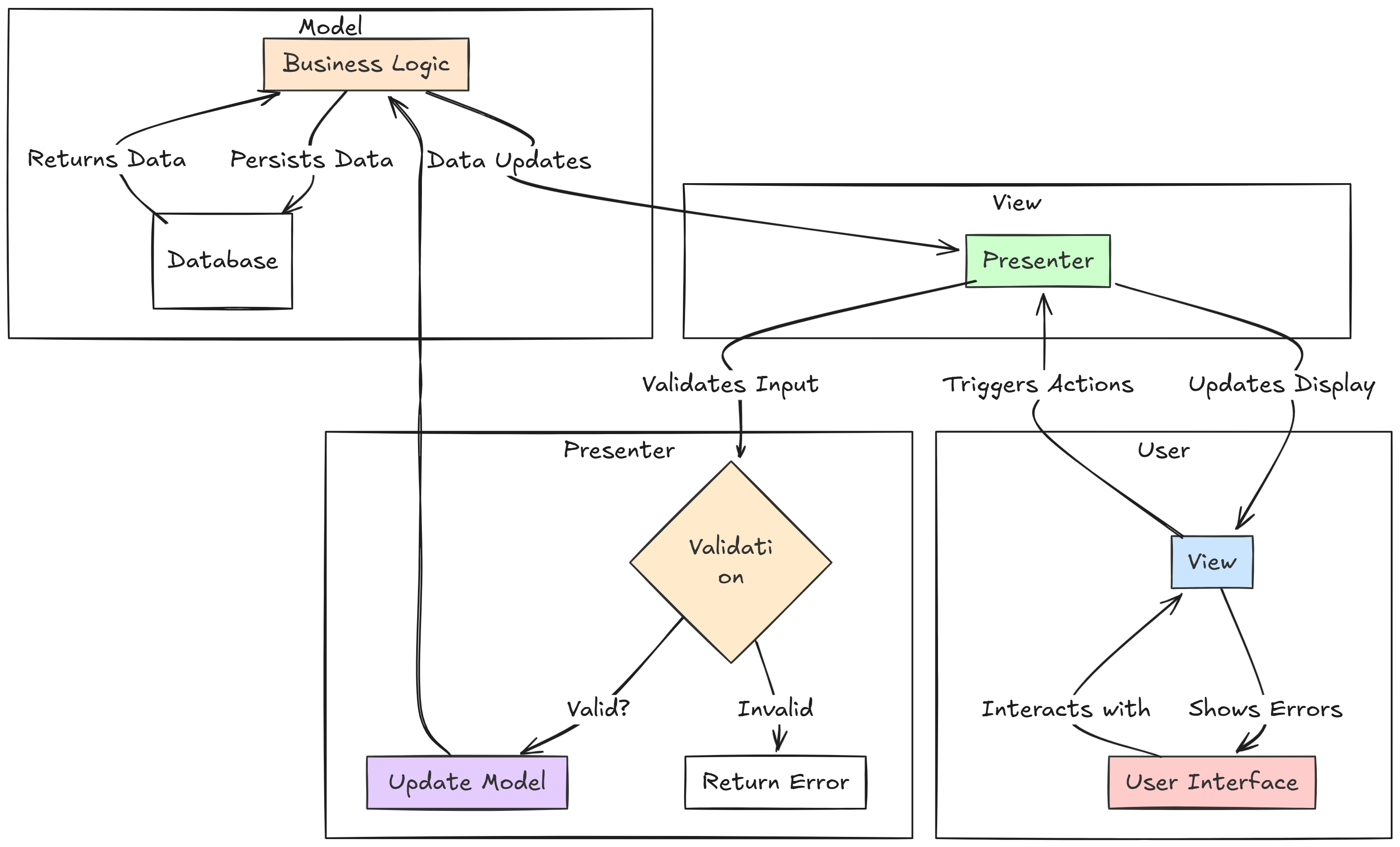MVP Architecture: A Layman's Guide
MVP stands for Model-View-Presenter. It is a software design pattern that structures your code by dividing it into three interconnected components. This separation makes your application easier to maintain, test, and develop. In simple terms, MVP splits your application into:
- Model: Manages data and business logic.
- View: Displays data to the user.
- Presenter: Acts as the intermediary between the Model and View.

Components Explained
Model
- Role: The Model handles data operations such as fetching, storing, and updating data.
- Layman's Explanation: Think of the Model as the "brain" of your application. It holds all the important data and rules, but it doesn't worry about how the data is shown.
View
- Role: The View is responsible for the user interface. It displays the data and captures user interactions (like button clicks or text input).
- Layman's Explanation: The View is like the "face" of your app. It's what the user sees and interacts with, such as buttons, text boxes, images, etc.
Presenter
- Role: The Presenter acts as the mediator between the Model and the View. It receives user actions from the View, processes them (often involving the Model), and updates the View with new information.
- Layman's Explanation: Imagine the Presenter as a "traffic cop" or "translator." It takes what the user does, figures out what needs to happen behind the scenes, and then tells the View how to change.
How MVP Works Together
- User Interaction: The user interacts with the View (for example, by clicking a button).
- Input Handling: The View sends the action to the Presenter.
- Processing: The Presenter processes the action and may request data or changes from the Model.
- Data Management: The Model performs the necessary data operations (fetching, updating, etc.) and returns the results to the Presenter.
- UI Update: The Presenter takes the data and instructs the View to update accordingly.
This clear separation allows each component to be developed, tested, and maintained independently.